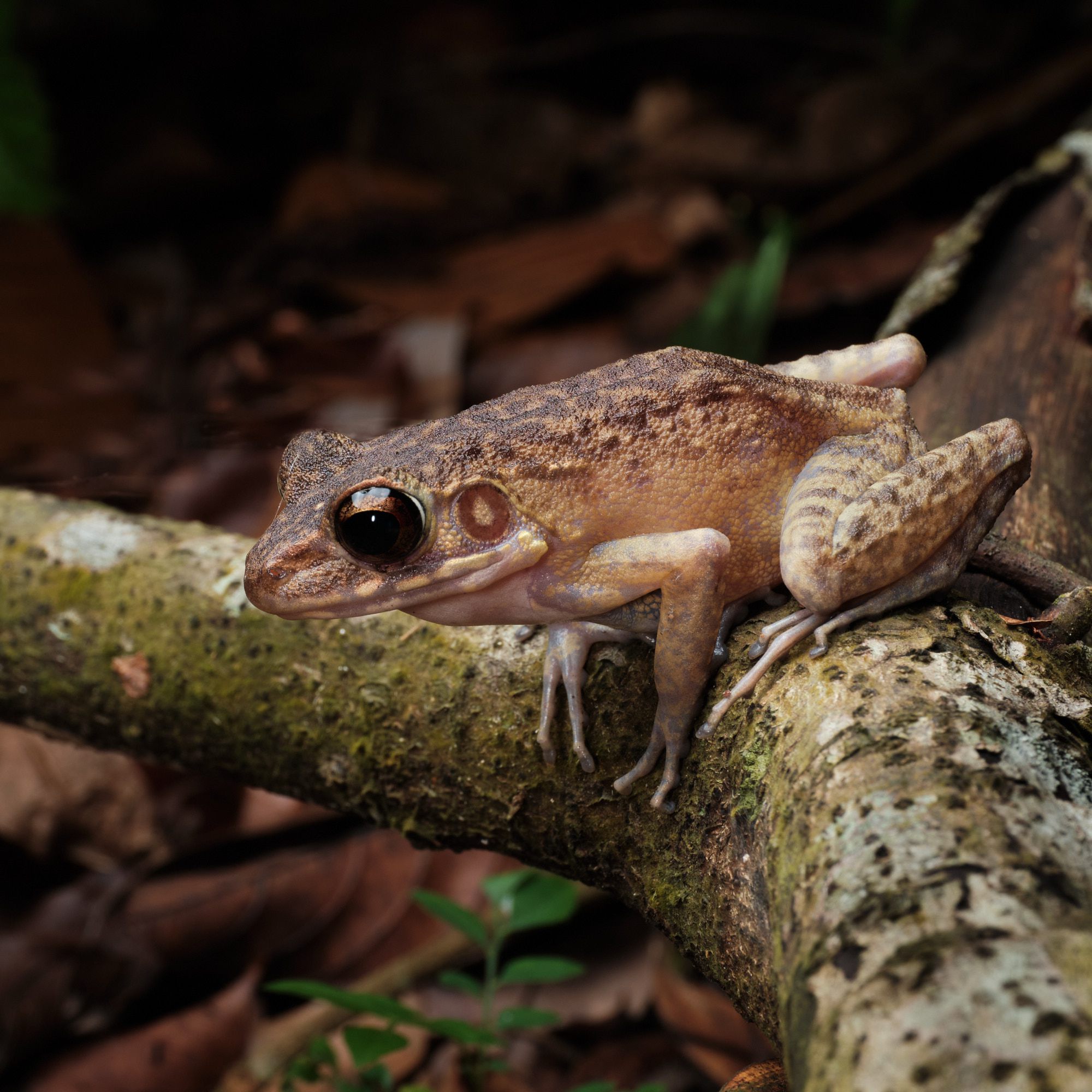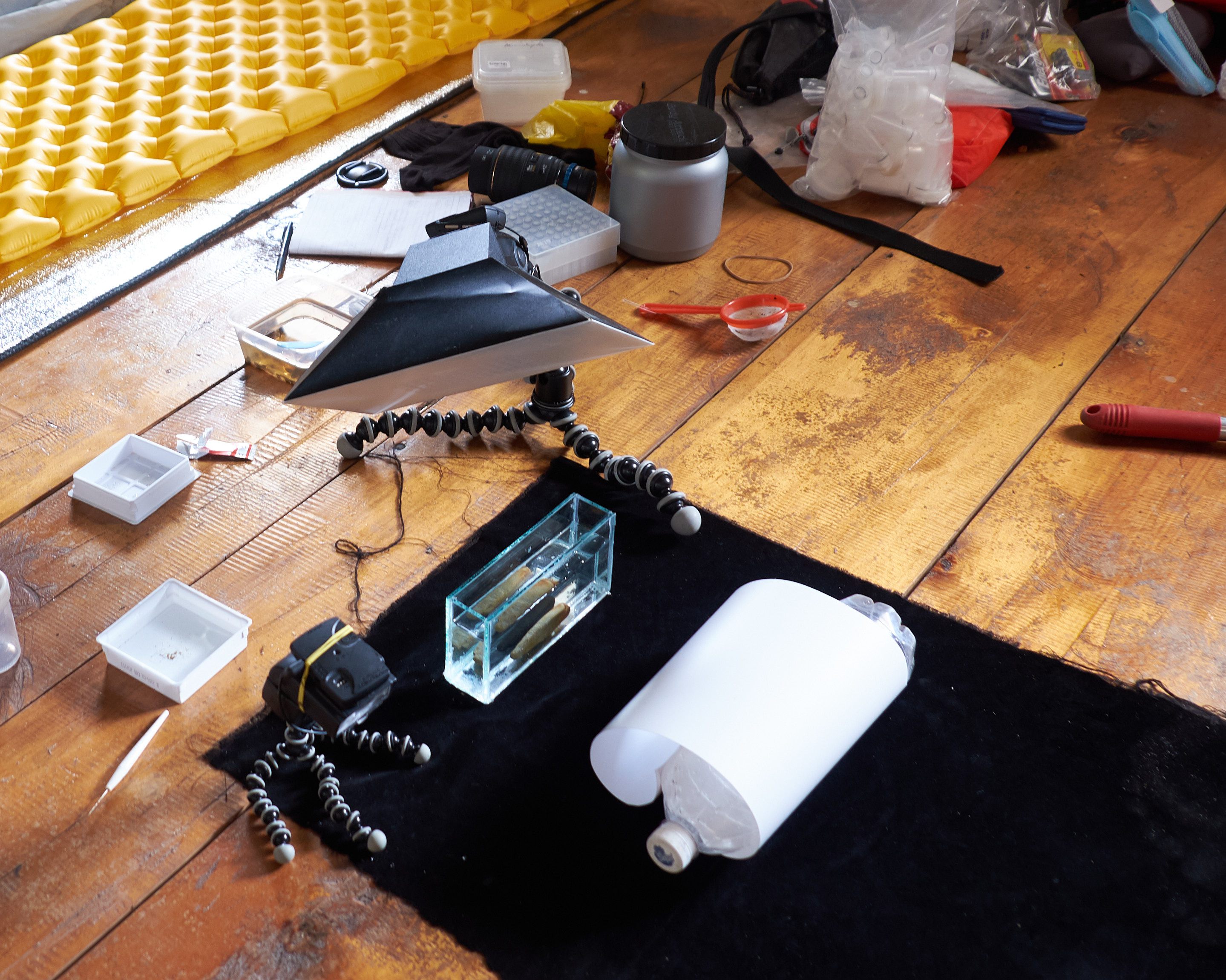On photos
We maintain a database containing thousands of images of frogs, tadpoles, and habitats from Borneo. Most photographs were taken by our own team, but several colleagues have generously contributed additional material, either providing rare images or sharing their exceptional photographic work. We acknowledge these friends and collaborators on the pages where their photos appear. In some cases, copyrights for contributed images are indicated by watermarks.
Less is more!
For this website, we aim to select high-quality photographs or images that highlight specific features useful for identification. A “good” photo, in this context, is not necessarily beautiful or technically perfect. Sometimes, however, we must use whatever material is available—especially for rare species.
Please respect the copyrights and the Creative Commons license of this website.
Some notes on tadpole photography
Over the past few decades, the advent and rapid development of digital photography have profoundly transformed how we acquire, process, and archive images. For the first time, it has become feasible to compile large catalogs of high-quality images for biodiversity research at relatively low cost.
Dedicated software now allows efficient management and metadata annotation of image collections containing thousands of photographs, enabling rapid comparisons of tadpoles across regions or study sites. Currently, Adobe Lightroom and Phase One Capture One are widely used professional solutions, although both are relatively expensive.

Hylrarana (Pulchrana) baramica perching.
The resolution and quality of images have steadily increased, and any camera with a resolution of 16 megapixels (MP) or more will likely meet a biologist’s needs in most cases. Flash control systems have also evolved substantially. Wireless-controlled flash systems or radio trigger systems are readily available for all platforms, making multiple flash setups for frog photography easy to handle in field situations.

Improvised workplace for tadpole photography in a field situation.
In synchronized wireless through-the-lens (TTL) systems from major camera manufacturers, lighting measurements and communication between the flash unit and camera occur automatically. Images can be reviewed immediately on the camera screen, allowing adjustments—such as exposure compensation—when needed. With modern flash systems, little manual intervention is required; the technique is generally simple and reliable.
Good lighting can be achieved by placing the main (wirelessly controlled) flash on top of the aquarium and positioning a second flash with slightly reduced power to the left of the camera to soften shadows. Alternatively, two flashes—one on each side of the camera and directed toward the subject—can be used effectively. Flash units can be mounted on small table tripods. Some experimentation is usually necessary to determine the ideal setup, as results may vary depending on factors such as tadpole coloration, substratum, flash power, and the specific camera and lens combination.
Using diffusers (light modifiers) on the flash helps produce softer, less harsh illumination. Placing an 80 × 80 cm piece of black velvet cloth beneath and behind the aquarium provides a clean background and helps control unwanted reflections.
For tadpole photography, a custom-made mini-aquarium is extremely useful—approximately 20 × 10 × 4 cm (width × height × depth) with 4 mm glass walls. A bottom layer of sand, pebbles, or small rocks can serve as a naturalistic photo stage. The tadpole should be positioned close to the front glass; a thin straw may help gently guide it into place. Great care should be taken to keep the water as clean as possible, as floating particles become distracting in flash photography, especially against dark backgrounds. A leaf or plastic card placed in front of the rear glass can help prevent reflections. Dorsal views are best obtained in a black or white plastic dish with a shallow rim, while very small individuals can even be photographed in the rear cap of a camera lens.
Tadpole photography requires a macro lens. On APS-C sensor DSLR cameras, lenses with focal lengths between 50 and 100 mm work well. For full-frame cameras, focal lengths of 100 mm or more are ideal. Longer lenses provide greater working distance between the front element and the aquarium, creating additional space for flashes or reflectors. Extension tubes can increase magnification beyond 1:1, allowing detailed documentation of pigmentation patterns or mouthparts. Lenses in the 100–200 mm range also reduce parallax effects, helping to minimize refraction distortions toward the edges of the frame.
Most tadpole photographs on this website were taken without a scale. However, if measurements need to be extracted from images, a suitable scale should be placed near the tadpole, either inside or outside the tank. Some parallax error will occur, so longer focal lengths are preferable for measurement purposes.
Tadpoles are always photographed facing left to show the position of the spiracle, which is located on the left side of the body in most species. Using different background colors can help ensure that the outline of the tail fin remains clearly visible. When using a dark background, reflections of the tadpole may appear on the rear glass; these can be avoided by placing a non-reflective object (such as a colored card, rock, or leaf) behind the tadpole inside the tank. Properly lit and standardized lateral, dorsal, and ventral digital photographs accurately capture body shape, proportions, and pigmentation details. High-resolution images (16–50 MP) are invaluable for tadpole identification, allowing for cropping and examination of fine features—such as silver or golden iridocytes—that are often lost in preserved museum specimens.